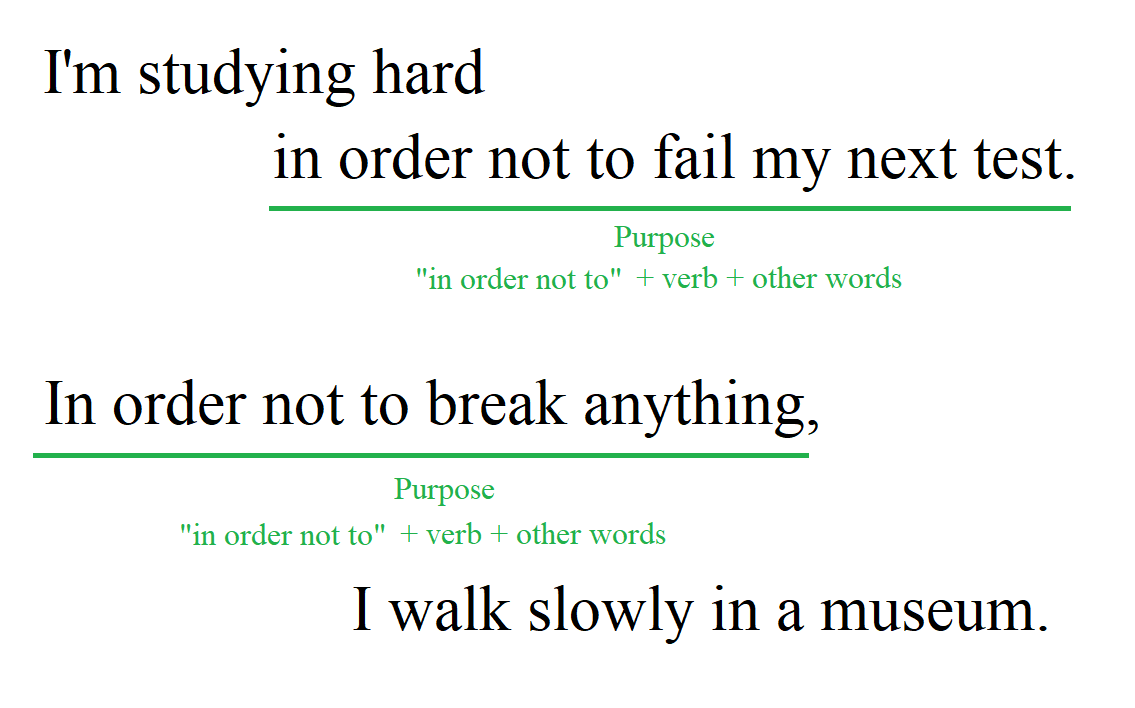Using "to" To Express Purpose
- Using "to" expresses purpose and shows why an action is done.
- "In order to" and "so as to" can also express purpose, often in more formal contexts.
- "In order not to" and "so as not to" are used to express purpose while avoiding a negative outcome.
Understanding how to express purpose in English is key to making your intentions clear. This lesson focuses on different ways to convey why something is done, using "to", "in order to", "in order not to", "so as to", and "so as not to".
Expressing Purpose with "to"
Using "to" is the most common way to express purpose in English. It's simple and straightforward, showing the reason behind an action.
Grammar Rule: Subject + verb + "to" + base form of the verb.
Examples:
-
I came here to buy something.
Subject ("I") + verb ("came") + "to" + base form of the verb ("buy") + object ("something").
-
She studies hard to pass the exam.
Subject ("She") + verb ("studies") + "to" + base form of the verb ("pass") + object ("the exam").
Using "in order to" and "so as to"
Both "in order to" and "so as to" are more formal than simply using "to", and they serve the same purpose: to explain the reason for an action. "In order to" is used more often than "so as to" in everyday conversation.
Grammar Rule: Subject + verb (+ other words) + "in order to" ("so as to") + base form of the verb.
You can place "in order to ..." at the beginning of the sentence, too. In that case, add a comma (,) after the last word of the "in order to" clause.

Examples:
-
He wakes up early in order to catch the train.
Subject ("He") + verb ("wakes up") + "in order to" + base form of the verb ("catch").
-
They saved money so as to buy a new house.
Subject ("They") + verb ("saved") + "so as to" + base form of the verb ("buy").
Expressing Negative Purpose: "in order not to" and "so as not to"
To express purpose while specifically wanting to avoid a negative outcome, use "in order not to" or "so as not to".
Grammar Rule: Subject + verb + "in order not to" ("so as not to") + base form of the verb.

Examples:
-
She speaks softly in order not to wake the baby.
Subject ("She") + verb ("speaks") + "in order not to" + base form of the verb ("wake").
-
He turned down the music so as not to disturb the neighbors.
Subject ("He") + verb ("turned down") + "so as not to" + base form of the verb ("disturb").
Practice this topic with the AI English Tutor
AI English Tutor will teach you the grammar and practice it with you in a conversation format. Plus, 100+ practice questions on this topic to cement your understanding.
Try ALULA for free on your phone or tablet








Do you have any questions about this lesson? Ask in the comment section, below.